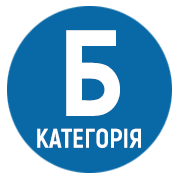BLENDED LEARNING IN THE CONTEXT OF DIGITAL TRANSFORMATION OF HIGHER EDUCATION
DOI:
https://doi.org/10.25128/2415-3605.23.1.5Keywords:
blended learning, digital technologies, flipped learning, collaboration, communicationAbstract
The integration of digital technologies with ordinary teaching and learning methods is a feature of higher education. Integration is growing rapidly, primarily due to the quick development of digital technologies and the enhancement of digital skills of both students and teachers. Digital technologies bring about powerful changes in the educational system. Expansion of an access to devices and communication increases students’ digital literacy. The development of learning environment and free online resources change the ways in which students get access to information and obtain new knowledge. Blended learning is an innovative teaching method today. The article substantiates the role of blended learning in the digital transformation of higher education, analyses the implementation of blended learning models in the educational process of a higher education institution. The advantages of using blended learning in the educational process and the key factors of an effective blended learning environment have been determined. The “Flipped Classroom” learning model has been substantiated in detail and effective methods for implementing the flipped classroom methodology have been identified. To implement a blended learning model, a teacher must possess competencies that include the digital competence of a teacher. The poll of teachers regarding their choice of blended learning models has been conducted. A wide range of digital tools, which are used by teachers during classes based on the blended learning method, have been identified. It has been summarized that the use of the mixed learning model contributes to the development of digital competence of teachers and students and the improvement of the quality of the educational process as well.
References
Концепція розвитку цифрових компетентностей. 2021. URL: https://zakon.rada.gov.ua/laws/show/167-2021-%D1%80#n93
Пінчук Л. М. Освітня технологія «Blended Learning» у контексті особистісно діяльнісного підходу. Науковий часопис НПУ імені М. П. Драгоманова. 2021. Вип. 83. С. 138–142.
Рекомендації щодо впровадження змішаного навчання у закладах фахової передвищої та вищої освіти. URL: https://mon.gov.ua/storage/app/ media/vishcha-osvita/2020/zmyshene%20navchanny/zmishanenavchanniabookletspreads-2.pdf
Сікора Я. Б. Реалізація змішаного навчання у вищому навчальному закладі. Науковий вісник Ужгородського університету. Серія «Педагогіка. Соціальна робота». 2016. Вип. 2 (39). С. 236–239.
Barbour M. et al. Online and Blended Learning: A Survey of Policy and Practice from K-12 Schools around the World. International Association for K-12 Online Learning, 2011, 130 p.
Cheung W., Hew K. Applying “first principles of instruction” in a blended learning course. Technology in Education. Transforming Educational Practices with Technology: First International Conference, ICTE 2014, 2015. P. 127–135.
Digital Education Action Plan (2021–2027). (2020). URL: https://ec.europa.eu/education/education-inthe-eu/digital-education-action-plan_en
Graham C. Blended learning systems. The handbook of blended learning. 2012. P. 3–21.
Henseruk H., Buyak B., Kravets V., Tereshchuk H., Boiko M. Digital transformation of the learning environment at university. Innovative Educational Technologies, Tools and Methods for E-learning University of Silesia in Katowice. 2020. Vol. 12. Poland. P. 325–335.
Kaur M. Blended learning-its challenges and future. Procedia-social and behavioral sciences. 2013. 93. P. 612–617.
Laurillard D. Thinking about Blended Learning. A paper for the Thinkers in Residence programme. KVAB. 2015. 26 p.
Piccian A. Introduction to blended learning: research perspectives. V. 2. Blended Learning, 2013. P. 1–9.
Rayees P. Flipping your classroom. Learning and Innovation. International journal of Movement Education and Social Science. 2018. 7 (2). P. 275–280.
Scott C., Vasylenko O. Mathematical and Statistical Methods of Analyzing the Successful Implementation of German-Ukrainian Projects. Proceedings of the 11th International Conference on Applied Innovations in IT. 2023. P. 151–160.
Zuvic-Butorac M., Roncevic N., Nemcanin D., Nebic Z. Blended e-learning in higher education: research on students' perspective. Issues in Informing Science & Information Technology. 2011. 8 (1). 409 p.






